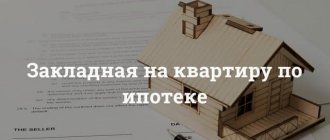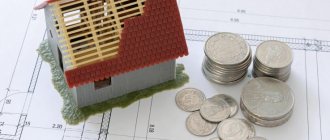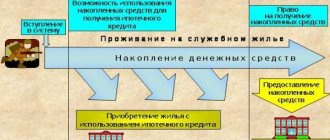A mortgage note is a document with the characteristics of a security, which indicates the right of its owner to receive credit funds secured by the mortgage, as well as to the property encumbered by it. In practice, a mortgage is used to speed up and simplify transactions with real estate. The rules for mortgage lending and the role of the mortgage in them are provided for by the Federal Law “On Mortgage” No. 102 of July 16, 1998, as amended. According to the above-mentioned law, the mortgage note must meet standard requirements and contain the following information:
- the full name and place of registration of an individual, if he is the pledgor, as well as the full name and location according to the constituent documents, if the pledgor is a legal entity;
- full details and place of registration/location of the first mortgagee (the person to whom the mortgage was issued);
- details of the mortgage agreement, date and place of its conclusion;
- complete information about the debtor, if the mortgagor is not him;
- the amount of the mortgage loan, the amount of interest or the conditions under which they will be determined at the time of fulfillment of the obligation;
- the date of provision of the mortgage loan or its terms, if the parties agreed to issue funds in installments;
- detailed description of the pledged property. The description must be carried out in such a way that the property can be distinguished from other property with similar parameters and properties;
- data of the document confirming the rights of the mortgagor to real estate, indicating the date, authority and place of state registration of this right.
Mortgage note
If the subject of the pledge is the right to lease, then the name of the property accepted for lease and the term of its validity are indicated in the mortgage; signature of the pledgor or debtor, if the pledgor is a third party;
The mortgage note is drawn up in a single copy. If it is compiled on several sheets, all of them must be numbered, laced and sealed with the seal of the body that carried out the registration. If the details of the mortgage loan agreement differ from the details of the mortgage note, the details of the latter are considered correct.
ConsultantPlus: note.
On the transfer of a documentary mortgage issued before 07/01/2018 to the depository, see Federal Law dated 11/25/2017.
Article 13. Basic provisions on the mortgage
(as amended by Federal Law dated November 25, 2017 N 328-FZ)
(see text in previous)
1. The rights of the mortgagee under the obligation secured by a mortgage and under the mortgage agreement may be certified by a mortgage, unless otherwise established by this Federal Law.
A mortgage may certify the rights of the mortgagee under the mortgage by force of law and under the obligation secured by this mortgage, unless otherwise established by this Federal Law.
A mortgage certifying the rights of the mortgagee under a mortgage by force of law and the obligation secured by this mortgage shall be subject to the provisions provided for a mortgage under a mortgage by virtue of an agreement, unless otherwise established by this Federal Law.
How and where to apply
The borrower should not have any difficulties with obtaining a mortgage for the simple reason that it is issued by the bank. The client’s main task is to check the correctness of filling and sign.
In most cases, you need the same documents as when applying for a loan:
- passport of the borrower and guarantors, if any;
- loan agreement;
- purchase and sale agreement or agreement on shared participation in construction with a transfer deed;
- marriage certificate if the borrower is married;
- assessment report and other documents requested by the bank.
The entire procedure for obtaining a mortgage can be described in 3 steps:
- Study and sign the loan agreement and mortgage at the creditor bank.
- Pay the state fee and register the mortgage with Rosreestr. Registration cost – 2,000 rubles.
- Receive an extract from the Unified State Register of Real Estate confirming ownership of an apartment or house with a mark of encumbrance.
An encumbrance is the imposition of restrictions on certain actions in relation to a property: sale, donation, redevelopment, rental and some others. Without the consent of the mortgagee, i.e. the bank, you do not have the right to perform these actions. Violation threatens to terminate the contract on the part of the bank and demand the return of the loan amount.
The mortgage note is drawn up in 1 copy and stored in the bank or in the depository by order of the bank until the borrower repays the full amount of the mortgage loan.
What is an apartment mortgage?
A mortgage is a security that certifies the following rights of its legal owner:
1) the right to receive fulfillment of monetary obligations secured by a mortgage, without providing other evidence of the existence of these obligations;
2) the right of pledge on property encumbered with a mortgage.
3. A mortgage is a registered documentary security (hereinafter referred to as a documentary mortgage) or an uncertificated security, the rights under which are secured in the form of an electronic document signed with an enhanced qualified electronic signature, which is stored in the depository, in accordance with Article 13.2 of this Federal Law (hereinafter - electronic mortgage).
Rights under a mortgage may be exercised by the legal owner of the mortgage and other persons who, in accordance with federal laws or their personal law, exercise rights under securities on their own behalf (hereinafter also referred to as another person exercising rights under a documentary mortgage or electronic mortgage).
4. The obligated persons under the mortgage are the debtor for the obligation secured by the mortgage and the mortgagor.
5. Drawing up and issuing a mortgage is not allowed if:
1) the subject of the mortgage is an enterprise as a property complex or the right to lease it;
2) a mortgage secures a monetary obligation, the amount of debt for which is not determined at the time of concluding the agreement and which does not contain conditions allowing this amount to be determined at the appropriate time.
6. In the cases provided for in paragraph 5 of this article, the terms of the mortgage in the mortgage agreement are void.
7. The mortgage is drawn up by the mortgagor, and if he is a third party, also by the debtor for the obligation secured by the mortgage.
The mortgage is issued to the original mortgagee by the rights registration authority after state registration of the mortgage. A mortgage may be drawn up and issued to the mortgagee at any time before the termination of the obligation secured by the mortgage. If the mortgage is drawn up after the state registration of the mortgage, a joint application of the mortgagee and the mortgagor is submitted to the rights registration authority, as well as a mortgage, which is issued to the mortgagee within one day from the moment the applicant applies to the rights registration authority or within one day from the receipt of such documents by the registration authority rights from the multifunctional center.
The transfer of rights under the mortgage and the pledge of the mortgage are carried out in the manner established by Articles 48 and 49 of this Federal Law.
8. The debtor under the obligation secured by the mortgage, the mortgagor and the legal owner of the mortgage may, by agreement, change the previously established conditions of the mortgage.
9. By order of the owner of a documentary mortgage, immobilized in the manner provided for in Article 13.1 of this Federal Law (hereinafter referred to as the immobilized documentary mortgage), or an electronic mortgage, or another person exercising the rights under an immobilized documentary mortgage or electronic mortgage, the depositary is obliged to make deposits in the securities accounts of the specified persons a special note granting the pledge holder of the specified securities the right to sell the specified securities after a certain period in order to satisfy the claims secured by the pledge (hereinafter referred to as the special pledge endorsement).
ConsultantPlus: note.
On the transfer of a documentary mortgage to the depositary, see Federal Law No. 328-FZ dated November 25, 2017.
10. Accounting and transfer of rights to an immobilized documentary mortgage and electronic mortgage, including pledge and other encumbrances and restrictions on the disposal of these securities, as well as interaction between depositories that store and (or) record the rights to an immobilized documentary mortgage or electronic mortgage, carried out according to the rules established for uncertificated securities by the legislation of the Russian Federation on securities, unless otherwise provided by this Federal Law.
11. The federal executive body exercising the functions of legal regulation in the field of state registration of rights to real estate and transactions with it (hereinafter referred to as the regulatory body in the field of state registration of rights) establishes:
1) an application form for the issuance of a documentary mortgage or an electronic mortgage, as well as a form of an electronic mortgage;
2) an application form for making changes to a documentary mortgage or an electronic mortgage, as well as an agreement form for making changes to an electronic mortgage;
3) requirements for filling out the forms provided for in this paragraph, as well as requirements for their formats;
4) the procedure for interaction between the depository storing the immobilized documentary mortgage or electronic mortgage and the rights registration authority.
12. Information interaction between the rights registration authority and the depositary storing the electronic mortgage or immobilized documentary mortgage is carried out using a unified system of interdepartmental electronic interaction.
What should be contained
According to Chapter 3 of Federal Law No. 102, there is no single form for registering a pledge. The mortgage document for the apartment must indicate:
- Document's name,
- Borrower details,
- Pledgor details
- Mortgagee details
- Terms of the loan agreement,
- Parameters of the issued loan,
- Mortgage repayment terms,
- Collateral object,
- Mortgage price,
- A document confirming ownership of the property,
- The presence of encumbrances,
- Signatures of all members of the transaction,
- Date of.
Important! It should be remembered that by signing a mortgage, you give the bank the right to take the property if the terms of the contract are violated. Therefore, it is better to make sure that the document is formatted correctly.
Mortgage agreement No.___
This is important to know: What deposit is taken when selling an apartment, sample contract
City __________, "___"__________200_
______________________, hereinafter referred to as the “Pledgee”, represented by _____________________, acting on the basis of ____________, on the one hand,
and citizens ________________ (passport series ______, number _______, issued ______________, “___”_________19__), “___”_______19___ year of birth, registered at the address: ____________________, and ________________ (passport: series _______, number ________, issued _______________, “__”______19__), “___”________19___ year of birth, registered at the address: ________________________, who are spouses (marriage certificate series ______, No.______ dated “___”_________ 19___, issued _________) hereinafter referred to as the “Pledger” , on the other hand, have entered into this Agreement as follows:
- Subject of the agreement
- 1. The Pledgor, in order to secure obligations, according to (name and details of the agreement on the provision of funds) concluded between ______________ and the Pledgee (hereinafter referred to as the Main Agreement), pledges to the Pledgee a residential premises located at the address: _______________, consisting of ____ rooms, with a total area ______, living area ________ (hereinafter referred to as the Living Premises).
- 2. The cost of the Residential Premises, by agreement of the Parties, is ______________ rubles.
- 3. The pledged property remains with the Pledgor in his possession and use.
1.3. The parties agreed that the rights of the Mortgagee under this Agreement are certified by the mortgage.
1.4. The main agreement was concluded between the Pledgee and the group __________________ on the following conditions:
— The amount of funds provided is ________ rubles;
— The purpose of providing funds is the renovation of residential premises located at the address: __________________________, consisting of ________ rooms, with a total area of ___ sq.m., including a living area of ___ sq.m., located on the ___ floor of a ___ storey building (hereinafter referred to as Residential premises);
— The period for returning the funds provided is __________________________ months, counting from the date of actual provision of funds.
— Interest rate — ___ (____) % per annum.
— Interest is accrued on the balance of the amount of funds to be returned on a monthly basis, starting from the day following the day of actual provision of funds, and up to and including the day of the final date for payment of funds.
The interest period is the period from the first to the last day of each calendar month (both dates inclusive).
— The procedure for returning funds and accrued interest:
1.5. The Mortgagor’s ownership of the Residential Premises is certified by Certificate of Ownership No.___ dated “____”_____________, issued on the basis of _________________________________.
1.4. The Pledgor informs the Pledgee that as of the date of conclusion of this Agreement, the above-mentioned Residential Premises has not been sold to anyone, has not been donated, has not been pledged, is not in dispute, under arrest or prohibition, and is not encumbered with rent, lease, lease or any other obligations.
- 2. Rights and obligations of the parties.
2.1. The pledgor undertakes:
2.1.1. Do not alienate the Residential Premises, carry out a subsequent mortgage on it, or otherwise dispose of it without the prior written consent of the Mortgagee.
2.1.2. Do not rent out the Residential Premises, do not transfer them for free use, or otherwise encumber them with the property rights of third parties without the prior written consent of the Mortgagee.
2.1.3. Take measures necessary to preserve the mortgaged Residential Premises, including current and major repairs.
2.1.4. Notify the Pledgee of the threat of loss or damage to the pledged Residential Premises.
This is important to know: Allocation of shares to children when using maternity capital
2.1.5. Timely pay taxes, fees, utilities and other payments due from him as the owner of the Residential Premises, as well as conscientiously fulfill other obligations arising from him as the owner of the Residential Premises.
2.1.6. Provide, upon request of the Mortgagee, at least once a year, documents (receipts) confirming payment of taxes, fees, utilities and other payments due from him as the owner of the Residential Premises.
2.1.7. On the day of signing this Agreement, under the control and with the participation of the Mortgagee, draw up a mortgage certifying the rights of the Mortgagee to the Main Agreement and under this Agreement, perform all necessary actions on his part to transfer the mortgage and this agreement to the body that carries out state registration of rights.
- 1.8. No later than 2 (Two) working days from the date of state registration of this Agreement, insure the Residential Premises at your own expense with the Insurance Company, agreed in writing with the Mortgagee, against the risks of loss and damage in favor of the Mortgagee for the period of validity of this Agreement plus one working day after concluding the Agreement (policy) of property insurance, where the Mortgagee will be indicated as the first beneficiary;
You can view the full version of the document by following the link.
Example of a mortgage form
MORTGAGE
on an obligation secured by a mortgage
________________________ "___" _______ ____ g.
- Pledgor
Full name, year of birth, passport details _________________________________________________________________________________ _____________________________________________________________________________________________________________________
- Debtor ________________________________________________________________________________________________________________
Full name, date of birth, passport details ________________________________________________________________________________
- Original mortgagor
Name (for legal entity): __________________________________________
License No. __________________________________________ issued by the Central Bank of Russia "___" _________ ____
Location: ____________________________________________________________
Bank details: correspondence/account _________________________in ___________________________________________VIC _______________________________ Taxpayer Identification Number _________________________________
4. Obligation secured by mortgage
Reason for occurrence: Loan agreement No. ___________________ (other monetary obligation, the fulfillment of which is secured by a mortgage)
Place of detention: city ___________________
Date of conclusion: “___” ___________ _____
Amount: _____________________ rubles.
Interest: __________________________ percent per annum
Deadline: ___________________ from the date of loan provision
- Subject of mortgage
- Location of the subject of the mortgage: ________________________________________________
___________________________________________________________________________
Title and description sufficient for identification:
Cadastral number: ___________________________
Information about encumbrances: ____________________
As of “____” ____________ ____ year. monetary value of an item
What kind of document is this and why is it compiled?
In accordance with the law, a mortgage is a (registered) security that certifies the legal right of its owner to repay loan obligations secured by a mortgage, as well as the right of pledge on real estate encumbered with a mortgage.
This document is subject to mandatory state registration.
The security is issued by the bank and signed by the mortgage borrower on the day the loan is received.
However, the law does not prohibit the registration of a mortgage without drawing up this document.
The subject of such securities is usually the property, the rights to which are transferred to the borrower after signing the agreement.
The spread of this instrument on the market is explained, among other things, by the ability of banks to solve the problem of lack of money in the long term with their help:
- the lender has the right at any time to sell the rights to claim the mortgage to another bank;
- a credit institution has the right to issue securities secured by mortgages and, thereby, raise funds for mortgages on the market.
But the main purpose of its execution is to provide the bank with guarantees of the borrower’s solvency.
What is a mortgage? Tips for registration
A mortgage is a type of loan for the purchase of real estate, which is issued for a long term. Sometimes it even reaches 20 years. A mortgage is also issued for purchases, for example, a car. In any case, the loan amount will be quite large, so concluding a mortgage agreement requires a lot of documents and permits. One of the most important papers is the mortgage on the property.
A mortgage is the most reliable option for obtaining a loan to purchase a home, both from the bank and from the borrower. Even if you have too little income or don’t work at all, the bank will allow you to get a mortgage if you have a mortgage in hand.
Contents of the mortgage
The security must contain the full name of the borrower, the parameters of the collateral property, and the terms of the agreement.
- Name and location (registration) of the pledgor.
- Date, number, place of conclusion of the mortgage loan agreement.
- Amount, loan interest and loan period.
- Date of loan issuance.
- Description of the collateral property.
- Details of the document establishing the rights to the pledged property.
- Marks of state registration authorities.
- The date the document was issued to the original mortgagee.
Drafting requirements are also regulated by law, but banks have the right to impose additional conditions. At Sberbank, for example, mortgages may vary slightly depending on the loan issuing offices.
A sample and what a mortgage looks like can be seen here.
Information from the mortgage
Many people are interested in the question of where to find the mortgage note number. The point is that there is no serial number until the Central Bank passes state registration in Rosreestr, and only after that the bank itself takes it.
The document contains the following information useful for transaction participants:
- Full name of the bank client.
- Data on collateral real estate (full description indicating square meters, location, in general as detailed as in the case of a collateral agreement).
Requirements for the content of the bond are regulated by law, but bankers can amend the existing text. Let’s say that in PJSC Sberbank of Russia, a security may differ depending on the region where the loan was issued.
The initiative in drawing up this guarantee belongs to the financial organization, since they are more interested in it. The borrower is directly involved in this and pays a commission, which does not exceed 1 thousand rubles.
It is noteworthy that some creditors themselves repay this amount. In any case, the payer should carefully study the text part of the document, since the bond will have to be signed.
It is clear that the mortgage agreement plays a significant role in issuing a loan, but in court the Central Bank will give preference. It is important to study the place of registration and number of the mortgage agreement, the date of issue of the document to the mortgagee, registration of the loan agreement by a government agency (their full name).
Filling out the form
The mortgagor, like no one else, is obliged to understand what a mortgage on an apartment is under a mortgage - after all, if the loan is not repaid, he risks losing a large amount of property. According to the Mortgage Law, the pledge document must be filled out by the mortgagor himself, but in practice it happens differently. Until the act of signing, the client has no idea what the mortgage looks like: bank employees enter all the information into the form. He signs the paper after a quick glance, relying on their good faith.
Federal Law No. 102 does not provide a single form for registering a mortgage, but lists all the information that it must contain.
- The word “Mortgage” and the number must be in the title - they are placed in the header of the document.
- Information about the borrower, mortgagor: full name, passport number and series, address and place of registration. If these are two different persons, a separate paragraph is dedicated to each.
- The mortgagee is a bank - you must indicate its name, address, license number, checkpoint, tax identification number.
- The details of the mortgage agreement are written down especially carefully: number and date of conclusion; loan size; payment procedure; the amount of monthly contributions; interest rate. The information must be carefully checked with the loan agreement - violation of its terms will give the bank grounds to seize the collateral. Please note: the validity period of the mortgage note depends on the loan repayment period; these points in both documents must be identical.
- Collateral property, its description: address; square; cadastral number; market price. The property appraisal is carried out by a specialist with a license for this type of activity. Encumbrances on the property (lease, rent, etc.) should be indicated, if any.
- Information on registration of rights to pledged property.
Then come the signatures of the three persons mentioned in the document: the debtor, the pledgor, the pledgee - and the date of registration of the security.
Please note: a mortgage certifies two rights of its holder: first, to receive your payments on the loan; secondly, to collect your property specified in the pledge.
| Tired of reading? Save time, ask a lawyer a question for FREE: |
Actions of the borrower after repayment of the mortgage
Once the borrower repays the debt, the mortgage will be canceled and the encumbrance removed. This means that from this moment the bank loses the opportunity to use the property at its discretion. As a rule, the bank returns the mortgage to the borrower within a few days after the loan is repaid. The law obliges him to do this no later than a calendar month, unless otherwise specified in the loan agreement.
In more detail, the process of removing the mortgage from an apartment is as follows. To eliminate the encumbrance, you must repay the loan in full and obtain a certificate from the bank confirming its full payment. Then you should submit an application for a mortgage to the bank. With this paper, you should go to Rosreestr (or to the MFC) and submit a mortgage, a bank certificate and an application for removal of the encumbrance. Next, the borrower receives an extract from the state register of ownership. The encumbrance is removed from the property. He is also given a mortgage. These documents should be retained.
Thus, when applying for a loan, the borrower, together with the bank, needs to draw up a mortgage and register it. After full repayment of the loan obligations, you need to pick it up and remove the encumbrance from the property. Removing the encumbrance means becoming the full owner of the apartment without reservations.
Mortgage: what is it?
To understand why a mortgage is needed, let’s compare getting a loan with a trade transaction. The borrower takes a large amount of money and buys an apartment. In return, he only makes a promise (loan agreement) that he will fully return the borrowed money someday, in 5-10 years. Alas, during this time anything can happen: he can lose his job, get sick, go to another world - and the bank will be left with empty promises. It may happen that the mortgaged apartment will be sold, but the money will be spent - there is no one to ask for the debt.
To prevent such a turn of events, the bank offers the client to take out a mortgage. It is a security representing a property that, under adverse circumstances, will be used by the lender to pay off the mortgage. In exchange for a large sum of money, the borrower pledges material assets, and thereby guarantees his solvency. As a rule, real estate objects serve as collateral:
- mortgaged apartment and any other living space owned by the borrower;
- land plot for development or summer cottage;
- commercial property;
- outbuildings, non-residential premises.
A mortgage is a valuable registered paper, which is drawn up by a specific person - the pledgor and addressed to the holder of this paper.
The debtor and the mortgagor may be different persons; their names must be indicated on the mortgage note.
Let’s say a young family takes out a mortgage for a new apartment, and takes out a parent’s home or a summer cottage as collateral. The owner of the mortgaged apartment will act as the debtor, and his parents will act as the mortgagor. Property registered as collateral is subject to an encumbrance: without the approval of the bank, it cannot be sold, donated, or inherited. If the debt is not repaid, the creditor exercises its right to foreclose on the property - sell it and compensate for its own losses. Essentially, for a bank, a mortgage is a more important document than a loan agreement.
If discrepancies are found in both documents, information from the mortgage will be taken into account.
Before signing, pledgors must carefully study the text of the paper on which their blood property is written.







